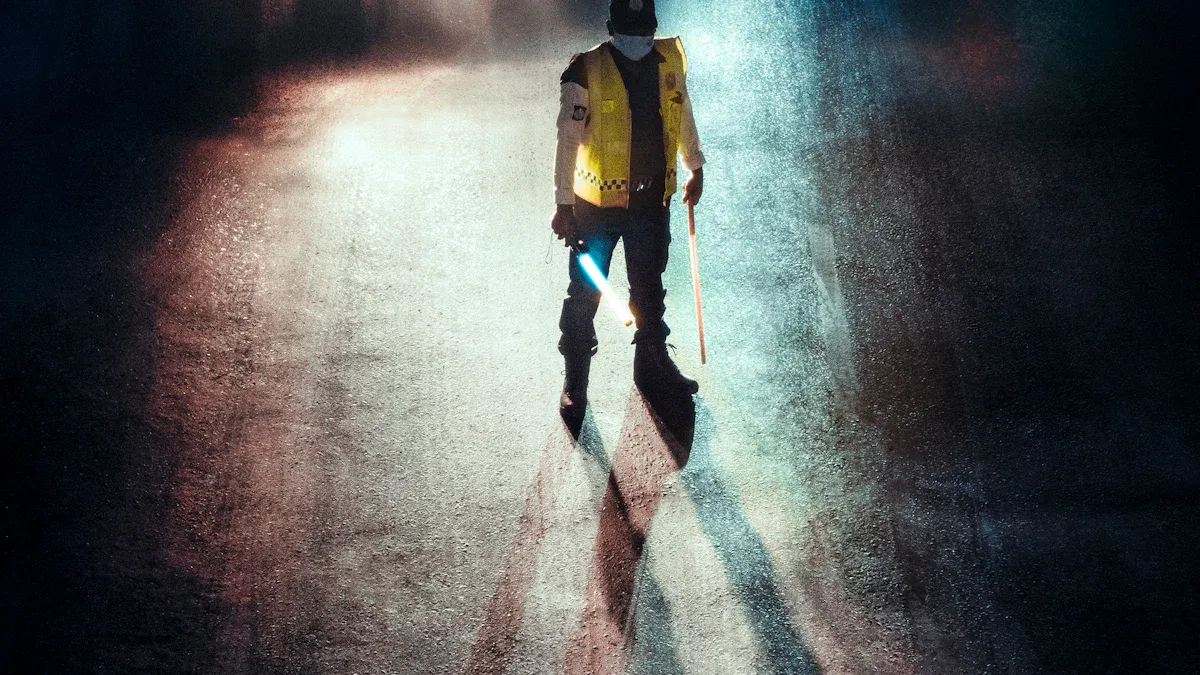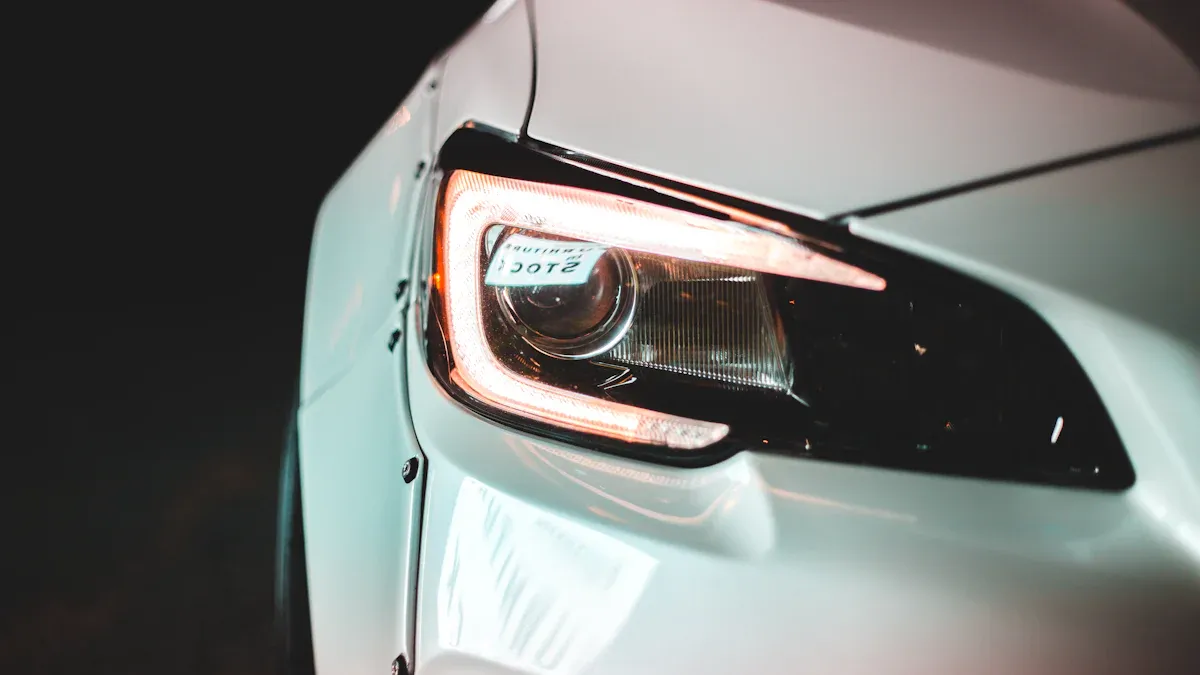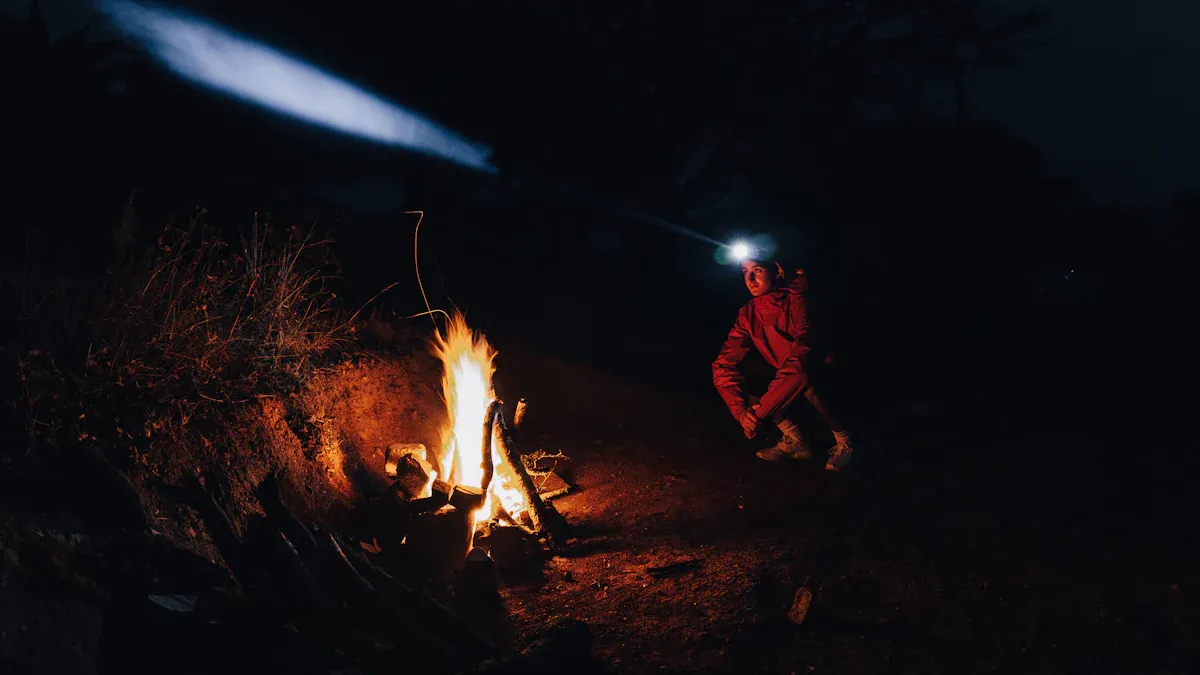Flashlights or Headlamps Which Is More Practical for You

Choosing between a flashlight and a headlamp can feel tricky. Each has its strengths, depending on what you need. For hands-free tasks like hiking, camping, or even night gardening, headlamps are a lifesaver. They keep your hands free while lighting the way. On the other hand, a helius flashlight offers precision and control, making it perfect for focused tasks.
Key Takeaways
Headlamps let you use both hands and give steady light. They are great for hiking or camping trips.
Flashlights are brighter and easier to aim. They work well for detailed tasks or emergencies.
Think about what you need: headlamps help you move easily, while flashlights are better for exact lighting.
Pros and Cons of Flashlights

Advantages of Flashlights
Flashlights are incredibly versatile tools that can adapt to almost any situation. Here are three key advantages they offer:
Increased Brightness: Modern LED flashlights can produce anywhere from 50 to a staggering 20,000 lumens. This makes them far brighter than standard light bulbs, giving you excellent visibility in dark environments.
Energy Efficiency: LED technology consumes less energy compared to traditional bulbs. This means your flashlight lasts longer on a single charge or set of batteries, saving you money and reducing waste.
Versatility: Flashlights come in all shapes and sizes. Whether you need a compact model for your pocket or a heavy-duty helius flashlight for outdoor adventures, there’s a design for every purpose.
Flashlights also give you control. You can direct the beam exactly where you need it, making them perfect for tasks that require precision, like inspecting tight spaces or reading in the dark.
Disadvantages of Flashlights
Despite their benefits, flashlights aren’t without flaws. Some common complaints include:
Many models lack anti-roll features, so they can roll off surfaces easily.
Sharp edges or pointy designs can make them uncomfortable to hold.
Inconsistent light tint can be frustrating, especially if you prefer a specific color temperature.
Some designs have oversized heads with small optics, which can feel unbalanced.
Battery compatibility issues and unnecessary modes can complicate their use.
Additionally, flashlights require one hand to operate. This can be inconvenient if you’re multitasking or need both hands free. While a helius flashlight might offer excellent brightness and control, it still shares these limitations with other models.
Pros and Cons of Headlamps

Advantages of Headlamps
Headlamps are a game-changer when you need both hands free. Imagine hiking through a dense forest or setting up a tent in the dark. A headlamp lets you focus on the task without juggling a light source. Here’s why outdoor enthusiasts love them:
They offer hands-free operation, so you can work or move freely while keeping your surroundings illuminated.
You won’t have to worry about dropping or losing your light since it stays securely on your head.
Their lightweight design ensures comfort, even during extended use.
Wherever you look, the beam follows, giving you consistent visibility in dark environments.
Many models double as handheld flashlights, adding versatility to their functionality.
Headlamps shine in specific activities like hiking, running, or even night gardening. They’re also perfect for fishing or wildlife observation, where you need to keep your hands free for gear or avoid disturbing animals.
Disadvantages of Headlamps
While headlamps are incredibly useful, they do have some drawbacks. For starters, they can be pricier than flashlights, especially high-quality models. They also tend to take longer to charge, which can be inconvenient if you’re in a hurry.
Durability is another concern. Unlike the solid aluminum bodies of many flashlights, headlamps often feature plastic housings and straps that wear out over time. This makes them less rugged for heavy-duty use. Additionally, their performance might not match a helius flashlight in certain situations, such as when you need a more focused or powerful beam.
If you’re looking for something tough and versatile, a flashlight might still be the better choice. But for hands-free convenience, headlamps are hard to beat.
Practical Scenarios for Each
Urban Use
In urban settings, both flashlights and headlamps have their strengths. Flashlights are great for group walks or when you need a versatile tool. They can even double as a self-defense item if necessary. Models like the Fenix TK20R V2.0 or the compact Fenix E03R are excellent choices for city use. However, holding a flashlight for long periods can cause hand fatigue, and it limits your ability to multitask.
Headlamps, on the other hand, let you keep your hands free. This makes them perfect for activities like taking pictures or using your phone while walking. They also follow your head movements, so you can quickly adjust your view. But they can create tunnel vision, which might reduce your peripheral awareness.
Outdoor Activities
When you’re outdoors, durability and brightness matter most. Flashlights with shockproof designs and waterproof ratings are ideal for rugged environments. High-lumen models with long beam ranges, like the helius flashlight, help you navigate trails or campsites with ease.
Headlamps shine in outdoor activities where hands-free lighting is essential. Whether you’re hiking, fishing, or setting up a tent, they provide consistent illumination. Many headlamps also include red light modes, which preserve your night vision and reduce glare.
Emergencies
During emergencies, headlamps can be lifesavers. They provide focused lighting, helping you respond quickly in dark or smoky conditions. Their hands-free design allows you to assist others or carry supplies without fumbling for a light source. Flashlights, while powerful, may not offer the same level of convenience in these situations.
Key Factors to Consider When Choosing
Comfort and Convenience
When choosing between a flashlight and a headlamp, comfort and convenience play a big role. Here are some factors to think about:
Brightness and Lumens: A light that’s too dim or too bright can make tasks harder. Choose one that fits your environment.
Battery Life: Long-lasting batteries mean fewer interruptions.
Fit and Comfort: Headlamps should sit snugly without causing discomfort. Flashlights should feel balanced in your hand.
Durability: Waterproof and shockproof designs ensure reliability.
Lighting Modes: Features like strobe or red light modes add versatility.
If you’re planning extended use, a headlamp’s hands-free design might feel more convenient. But for quick tasks, a helius flashlight offers unmatched ease of use.
Battery Life and Power Source
Battery life can make or break your experience. Rechargeable options save money and reduce waste, but disposable batteries are easier to replace in emergencies. The helius flashlight stands out with its efficient power management system, offering longer battery life than many headlamps. Plus, its plug-and-charge feature simplifies recharging, unlike some headlamps that require removing batteries.
Brightness and Beam Distance
Brightness and beam distance vary widely between models. Here’s a quick comparison:
Lumens | Distance | Best For |
|---|---|---|
1–250 | Up to 80 meters | Everyday tasks |
160–400 | Up to 100 meters | Camping, hiking |
400–1000 | Up to 200 meters | Caving, repairs |
1000–30000 | Up to 350 meters | Fishing, hunting |
3000–70000 | Up to 500 meters | Rescue missions |
7000–15000 | Up to 700 meters | Extreme conditions |
For long-distance illumination, flashlights like the helius flashlight excel. Headlamps, however, provide consistent lighting for close-range tasks.
Versatility and Multi-Functionality
Both tools shine in different ways. Headlamps are perfect for hands-free tasks like night hiking or DIY repairs. Flashlights, on the other hand, offer superior brightness and portability. For maximum versatility, consider carrying both. Use a headlamp for activities requiring free hands and a flashlight for tasks needing focused light.
Comparing the Helius Flashlight to Headlamps
The helius flashlight offers several advantages over standard headlamps:
Its aluminum alloy body makes it more durable.
The ergonomic design reduces hand fatigue.
It features a power indicator for easy monitoring.
Its brightness and beam distance outperform most headlamps.
Whether you’re in law enforcement or on a rescue mission, the helius flashlight provides the reliability and power you need.
Flashlights and headlamps each bring unique advantages to the table. Flashlights excel in durability, brightness, and versatility, making them perfect for focused tasks or emergencies. Headlamps, however, shine in hands-free scenarios like hiking or repairs. Owning both offers flexibility:
Use headlamps for mobility and consistent lighting.
Rely on flashlights for precision and durability.
🛠️ Tip: Combining these tools ensures you're prepared for any situation, whether indoors or outdoors!
FAQ
What’s the best option for hiking at night?
For hiking, a headlamp works best. It keeps your hands free and lights up wherever you look, making trails safer and easier to navigate.
Can I use a flashlight for camping?
Absolutely! A flashlight is great for focused tasks like finding gear in your tent. Pair it with a headlamp for maximum convenience during camping trips.
How do I choose the right brightness level?
Think about your activity. For reading, 50 lumens work fine. Outdoor adventures need 400–1000 lumens. Emergencies or rescue missions may require 3000 lumens or more.
💡 Tip: Always check the lumen rating and beam distance before buying. It ensures you get the right tool for your needs!
See Also
Selecting The Perfect Headlamp Flashlight For Your Needs
Enhance Your Camping Experience: Comparing Lanterns And Flashlights
Comparing Police Flashlights And Standard Flashlights: A Guide
Comprehensive Guide To Buying A Headlamp: Key Considerations
Must-Have Tools: Functional Headlamps For Hands-Free Lighting
